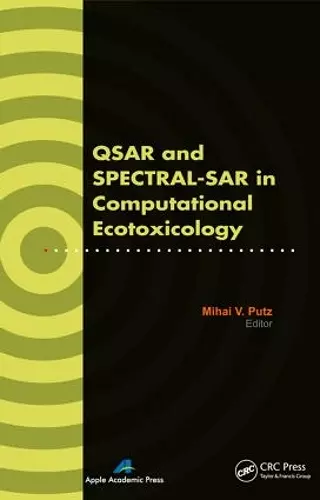QSAR and SPECTRAL-SAR in Computational Ecotoxicology
Format:Hardback
Publisher:Apple Academic Press Inc.
Published:19th Jul '12
Currently unavailable, and unfortunately no date known when it will be back
This hardback is available in another edition too:
- Paperback£82.99(9781774632024)

QSAR and SPECTRAL-SAR in Computational Ecotoxicology presents a collection of studies based on the epistemological bulk data-information-knowledge of the chemicals used in green chemistry. It assesses a specific model of pattern characterization of concerned active substances at the bio-, eco-, and pharmacologic levels through unitary formulation of the effector-receptor binding degree potential, including the logistic type by employing a computational algebraic quantitative structure-activity relationship (QSAR) model called SPECTRAL-SAR. It aims to minimize the residual recorded activities in the experiments that study the enzymic, ionic liquid, antagonists, and allosteric inhibition interactions.
The book covers:
- The classic QSAR approach
- The new SPECTRAL-SAR approach
- How to draw SPECTRAL-SAR maps for predicting ecotoxicological mechanisms for a given series of toxicants and single or multi-species in an open system
- Biological activity as related to chemical reactivity through associate descriptors
This book will be very useful in advanced courses on computational ecotoxicology, drug design and interaction, methods in quantum and computational chemistry, chemical molding, chemical bonding, and others.
”This monograph gathers, through a collection of original papers, the methodology and implementation of the newly QSAR method, built on algebraic means--the SPECTRAL-SAR, with toxicological applications for paradigmatic classes (including ionic liquids) of molecules and aquatic species. The book responds to the currents needs for in silico assessment of the mechanistic interpretation of the ligand-receptor interactions in open systems, especially where statistical analysis provides limited interpretation of the results. Overall, the volume may be regarded as a collection of advanced chapters in computational ecotoxicology equally valuable for graduate students and researchers working in the field of environmental sciences.”
--Prof. dr. Vasile Chis, Faculty of Physics, Babes-Bolyai University, Romania
“This innovative and well-written book, edited by Prof. Putz, largely expands the OECD QSAR Toolbox available online by introducing new powerful concepts, like the minimum spectral path principle, and new correlation factors to measure chemical–biological interactions. These algorithms constitute the SPECTRAL-SAR approach and achieve ‘spectacular computational results’ in all the studies presented in the book. The book is instrumental for university and chemical industry researchers in their daily jobs in filling gaps in ecotoxicity data needed for assessing the hazards of chemicals.”
--Dr. Ottorino Ori, Actinium Chemical Research, Rome, Italy
ISBN: 9781926895130
Dimensions: unknown
Weight: 488g
242 pages